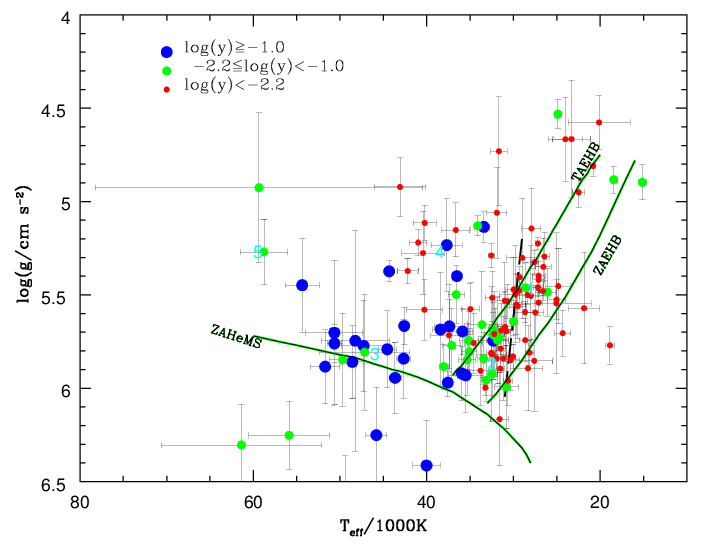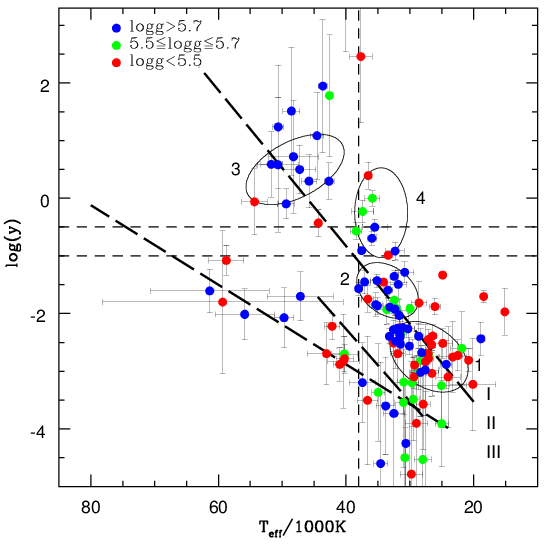You are here
Hot Subdwarf Stars Observed in LAMOST DR1
Yangping Luo (LAMOST Fellow, ) et al. (APJ ) present a catalog of 166 spectroscopically identified hot subdwarf stars from LAMOST DR1, 44 of which show the characteristics of cool companions in their optical spectra. Atmospheric parameters (effective temperatures, surface gravities and helium abundances) of 122 non-composite spectra subdwarf stars were measured by fitting the profiles of hydrogen (H) and helium (He) lines with synthetic spectra from non-LTE model atmospheres. Most of the sdB stars scatter near the Extreme Horizontal Branch in the Teff--logg diagram and two well defined groups can be outlined. We associate the lower temperature and surface gravity group with the Common-Envelope formation channel while the higher temperature and gravity group is consistent with the Roche-lobe Overflow channel. A clustering of He-enriched sdO stars appears near Teff=45000 K and logg = 5.8 that we associate with the double white dwarf merger formation channel. The sdB population separates into several nearly parallel sequences in the Teff-He abundance diagram with clumps corresponding to those in the Teff-logg diagram. Over 38000K sdO stars show abundance extremes, they are either He-rich or He-deficient and we observe only a few stars in the -1 < logy < 0 abundance range. With increasing temperature these extremes become less prominent and the He abundance approaches to logy=-0.5. A unique property of our sample is that it covers a large range in apparent magnitudes and galactic latitudes; therefore it contains a mix of stars from different populations and galactic environments. Our results are consistent with the findings of SDSS and GALEX. It shows that LAMOST has a tremendous potential for the study of hot subdwarf stars.

Fig.1— Teff − log(g) diagram. The zero-age EHB (ZAEHB), terminal-age EHB (TAEHB) (Dorman et al. 1993), and zero-age He main sequence (ZAHeMS) (Paczy´nski 1971) are marked with the green lines, respectively. The dashed line denotes the observed boundary of slow (Right) and rapid (Left) pulsating sdB stars (Charpinet et al. 2010)

Fig. 2.— Helium abundance versus effective temperature. The long dashed lines are the best fit of the two sdB sequences from Edelmann et al. (2003) and one sdO sequence from N´emeth et al. (2012). Four thin dashed lines denote log(y) = −0.5, log(y) = −1, log(y) = −4 and Teff = 38000K. Ellipses 1, 2 and 3 are similar to those in N´emeth et al. (2012) and ellipse 4 shows the clustering of the He-rich sdB stars.
